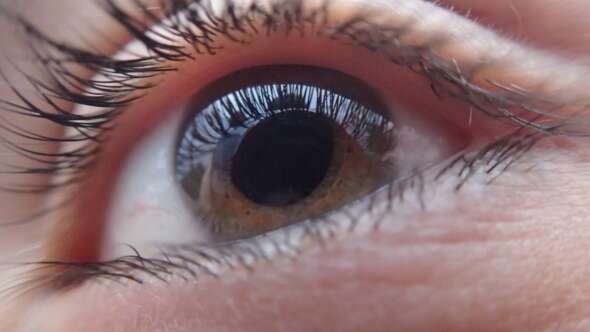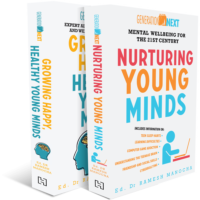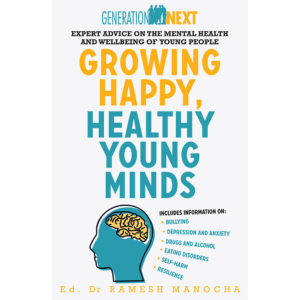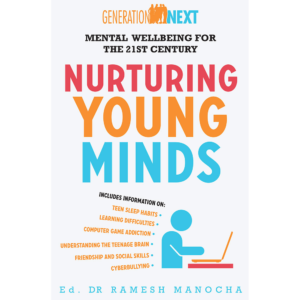This is the second paper on motivation. The previous paper focused on creating & regulating a dopamine-based classroom.
One of the characteristics of neurodivergent kids that I admire is, if they don’t see a point to doing something they won’t do it. End of story.
Most of them are harder to convince than a car parking inspector having a bad day, this makes motivating them a tricky business.
As mentioned in part 1, this is where dopamine- the neurochemical of motivation enters the picture.
Regulating dopamine in learning requires a mixture of new experiences or knowledge with having ‘wins’ or successes. Basically, this is a pattern of strength finding- mind stretching – & repeat.
When we springboard from areas of strengths we are much more likely to get engagement & an early success that increases dopamine, sustains motivation & stretches learning.
Once dopamine has been raised, students need to see the relevance of a task & to believe that they can succeed at that task. Without relevance or a good probability of success they aren’t going to attempt the task.
Converting Neurodiversity into Neuro-advantage
The capacities & advantages of neurodivergent kids vary. Their common element is their ability to think differently, have specialised interests & solve problems in distinctive ways.
For this reason, we need to be nuanced in our approaches to increasing motivation. Once we develop the flexibility to individually tailor our approaches, what initially appear to be large obstacles convert into strengths.
How Parents Can Help
Parents can complete the analysis of learning strengths at www.mylearningstrengths.com either with their child or on their behalf & use the free letter to start a conversation about building on their identified strengths. Discuss these with your child’s teacher(s). A full report is also available outlining strategies, strengths, & possible future career areas.
Learning strengths can help neurodivergent kids and their parents understand how to kickstart motivation. Building from a learning strength area that a young person already feels confident in, will increase dopamine & help to overcome their worries & fears. Starting with what is easiest builds momentum & motivation.
Success in life is about doing more of what you are good at & less of the things you are not good at. We learn more from our successes than from our failures.
Serena Williams is not well known because she can do Mathematics, Einstein wasn’t well known because he played football. When you focus on the things you find more enjoyable & interesting, even the things you find harder become easier.
In my earlier paper on neurodiversity & procrastination I suggested there are three main ways of overcoming procrastination:
1. Start with something small & build momentum.
2. Wait for your dopamine to replenish & try again.
3. Do something you hate even more than the thing you are supposed to be doing.
Let’s integrate approaches 1 & 2 to build motivation by linking them to existing learning strengths.
Spatial Reasoning
Many kids prefer learning through visuals. Presenting information visually increases understanding & retention of ideas. Many neurodivergent kids are creative thinkers who can develop images & designs with great accuracy and intricacy. Use this to create both a kick-starter as well as something that calms & relaxes them.
Even starting by scribbling on a piece of paper or drawing in the air with your fingertips is a beginning. Laying out different shapes or objects in a sequence or pattern can also build this learning strength.
This can range from simple doodling to the types of activities outlined in Betty Edward’s book, ‘Drawing on the Right Side of the Brain.’
Perceptual- Motor Skills
Many neurodivergent kids have sensory sensitivities. Once we know their preferences (sensory seeking, sensory avoiding, or sensory distracting) we can tailor experiences that will engage & motivate them. Parents usually know already what calms & motivates their child.
Pairing learning with physical movements can build this learning strength & also increases muscle memory.
Dancing, swaying, stillness, stomping, pointing, & body twisting are worth considering. Dopamine is enhanced by rhythmic movements. For some, having specific textures or aromas is also helpful in creating focus.
We can build upon existing learning strengths in perceptual-motor skills by asking young people to construct models of key concepts they are learning. We can also ask them to use mathematics to calculate where a thrown ball, paper plane or javelin will land & then test their theories out.

Image by Tobias Dahlberg from Pixabay
Concentration and memory
This is a great learning strength to have but it can also limit success. Some neurodivergent kids use their considerable learning strengths in concentration & memory to succeed well at school. If we rely just on our memory to succeed we can neglect to develop the thinking skills that set us up for success at higher levels. Consider extending thinking & logic as another learning strength.
Other kids essentially live ‘clock-free’ lifestyles. Some muck around in school & then wonder why they have to do so much work outside of school. Consider having them sit towards the front in class. If they can focus & listen well while at school they can save endless hours. This is valuable time saved that can be used for having fun.
Fun challenges can be a useful way of increasing dopamine & motivation. Memory can be increased by making visual, as well as verbal, explanations of ideas, recalling patterns, trails & sequences or creating maps from memory.
Planning and sequencing
Neurodivergent kids with strengths in planning & sequencing often like to see their progress towards a goal.
Make a detailed plan for learning & put the tasks to be completed into order.
Use post-it notes to organise the steps towards a successful outcome. On the first post-it note write the successful outcome you have in mind. Write the step before that & the step before that. Then write the first step you could take.
If you or your young person is in the senior years of school try to limit or disable social media pages as exams approach. If low motivation has caused a student to fall behind in any subject, have a working bee to catch up. Ask others to help. Students can ask teachers to help by saying something like, ‘I lost motivation for a while in this subject but now I’d really like to catch up.’
If the student has not been in the practice of making notes, start. If they feel embarrassed about asking questions in class, set a goal of asking one question per class. If that is too embarrassing, ask the teacher after class.
Smart people don’t know all of the answers. Smart people are clever enough to ask lots of questions.
If they’ve missed notes, ask for copies of them. Then write a revision summary for each subject, topic by topic. Use sticky notes, counters, markers, or objects to sequence the stages or steps in solving a problem or catching up in an area of learning.
If the study area has become a mess, clean it up.
Thinking and logic
Some neurodivergent kids with learning strengths in thinking & logic, lose motivation & then incorrectly conclude that school is not a place they can succeed. Usually this is fear of failure being expressed as avoidance rather than a real, life choice. Nevertheless, evaluating the pros & cons of learning & of remaining at school with them is a helpful first step.
Once they have realised that the prospect of 9 to 5 drudgery is not paradise on earth & the probability of becoming a world-famous gamer is sadly, quite slim, they can begin the process of renewing their enthusiasm for learning.
The idea that ‘wherever you go, you show up’ can be useful. Motivation is not just something you gain or lose, it is the way you approach your life.
We can all be experts in the art of the excuse. Kids who have felt unmotivated may have usually done anything they can think of, to avoid studying. The world is full of excuses that you can make: ‘The dog needs a walk’, ‘“I have to finish this computer game & then I’ll study’, ‘I’ll have a nap & study when I wake up’.
We have to be tough enough to do the work BEFORE we do the computer games/ TV watching/chat room messaging etc.
Some will be avidly excited about some areas of learning but dismissive of other areas.
Also, we need to be honest enough to admit that lying in bed, with the computer on, listening to music, with YouTube in the background & messenger open to chat with friends, is not & will never be, studying. Have some study time sitting up at a desk or table with NO electronic distractions on.
If you’ve been finding motivation has been elusive, change your usual patterns. For example, study in a local library rather than at home or change the room you study in.
Just as you learn to surf best by surfing, you learn to succeed in exams & essays by giving your undivided attention to your study. Practice in the same conditions you intend to perform in. While special exam provisions can be made for neurodivergent young people, generally there won’t be electronics & music in the exam room.
People smarts.
This is one of the most important learning strengths in life, especially for neurodivergent kids. Many of them may miss the emotional tones & expressions but are able to become skilled readers of behaviours & what they might indicate about another person’s inner feelings. This skill is valuable in friendship, workplaces & eventually, in romantic relationships.
People have who not developed a strength in this learning area can progress rapidly. One method is to watch video or film clips with the sound down & try to guess what’s going on. Then watch them again with the sound on. Over time, astuteness in reading people will improve.
Use pictures of faces to develop emotional detection skills.
Discuss different types of communication including texting, talking, emotional signalling, posture, & body language.
Watch how people move. What emotions do different movements convey?
For kids who are already strong in this area, thinking about the people who will be impressed when they succeed increases dopamine.
Language and word smarts
These are kids who find stories enchanting. Creating stories about the key pieces of information they need to learn assists their motivation.
If they have been dopamine depleted, some will be initially reluctant to create or express stories. Suggesting a series of inviting opening lines & then devising a story alternating lines generated by yourself & by them can overcome this.
Use graphic & audio novels or podcasts to reengage these kids in discussions around ideas.
Help them to learn that words are to authors as paints are to artists. You can create images through words. Try to do this, e.g., write a vivid account so the reader can almost ‘feel’ the sensation of peeling an orange or escaping from a monster.
Number smarts
Even kids with learning strengths in this area can find expressing or explaining concepts to be stressful. Stress unduly impairs the language circuits in our brain.
Rather than starting with verbal explanations, ask kids to illustrate number problems. Picture number problems as a pie charts, pizza, flowcharts, or percentages of people.
Where possible use movement-based, physical, real world mathematics activities such as measuring an area & mapping.
For students who are yet to develop learning strengths in numbers use whichever area they are already strong in & relate it to numbers.
Next steps
All students, teachers & parents need to know how to regulate dopamine to increase motivation. This knowledge applies to everyone.
Schools could ask parents & students to complete the assessment of learning strengths & use this as a basis for collective planning over the next term. This could also be integrated with career planning for senior students.
Schools could also consider hosting professional development sessions for parents, teachers & students on motivation & learning in brains, neurodivergence & learning strengths to consider ways of building on the strengths of all students.
It is essential that we regard neurodivergence as a strength rather than as a deficit & applaud, support & build the strengths of all of our wonderful young people.
I am grateful to Liz Keable and recommend her posts on metacognition on Linked-In to you for further inspirational reading.
More information
Email: inyahead@aussiebb.com.au
Andrew’s website: www.mylearningstrengths.com has helped over 45,000 young people in the past year discover their learning strengths.
LinkedIn: https://www.linkedin.com/in/andrew-fuller-2238a325/
Facebook: andrewfullerpsychologist
Learning Strengths
Books for Parents
The Bright Kid Challenge
Unlocking Your Child’s Genius
Tricky Behaviours
The A to Z of Feelings (Bad Apple Press)
Book for Teachers
Neurodevelopmental Differentiation- Optimising
Brain Systems To Maximise Learning (Hawker-
Brownlow).
Read Andrew Fuller’s Increasing Motivation Part 2 here as well.
Feature image by Photo by Orlando Vera from Pexels







